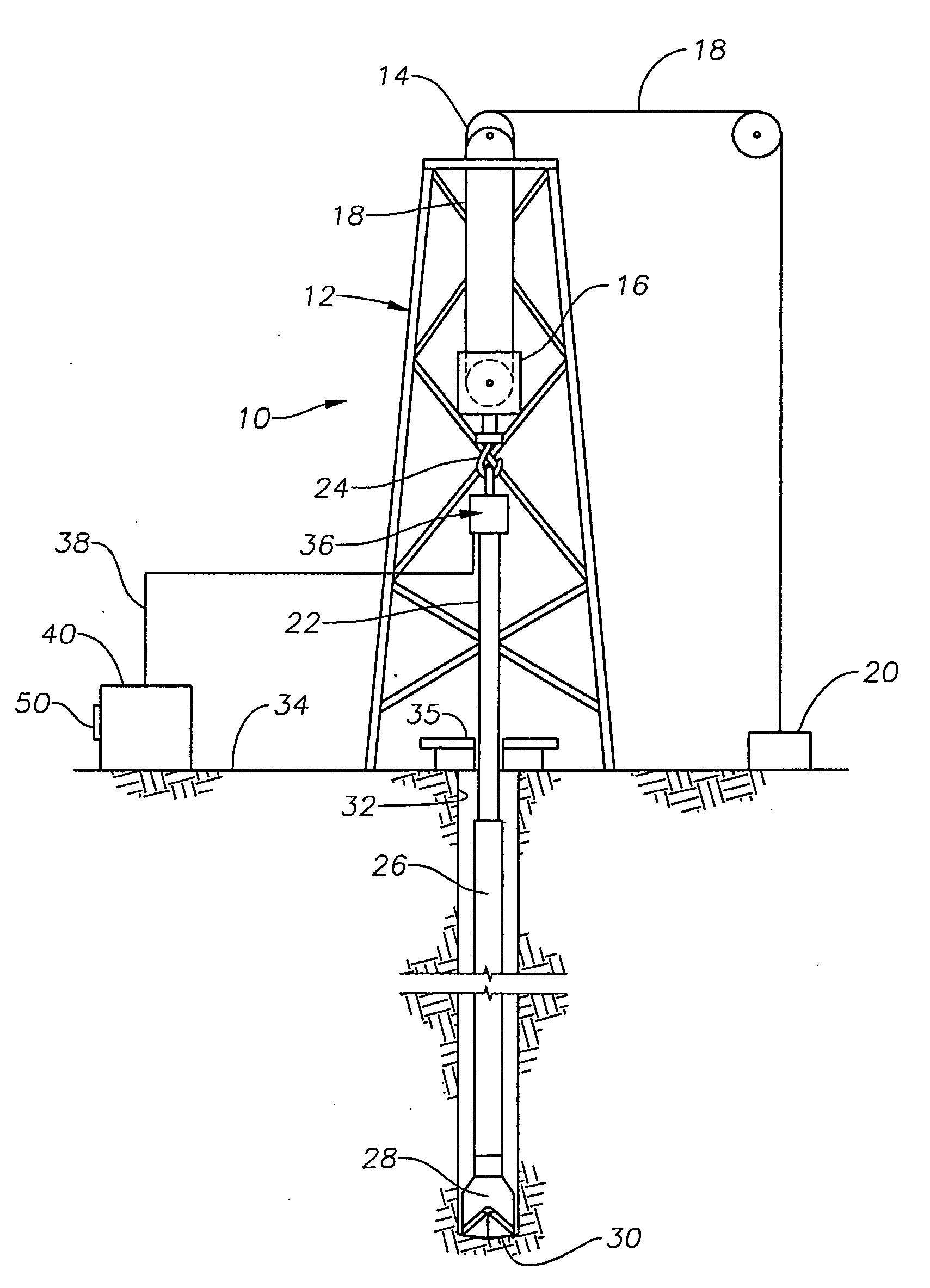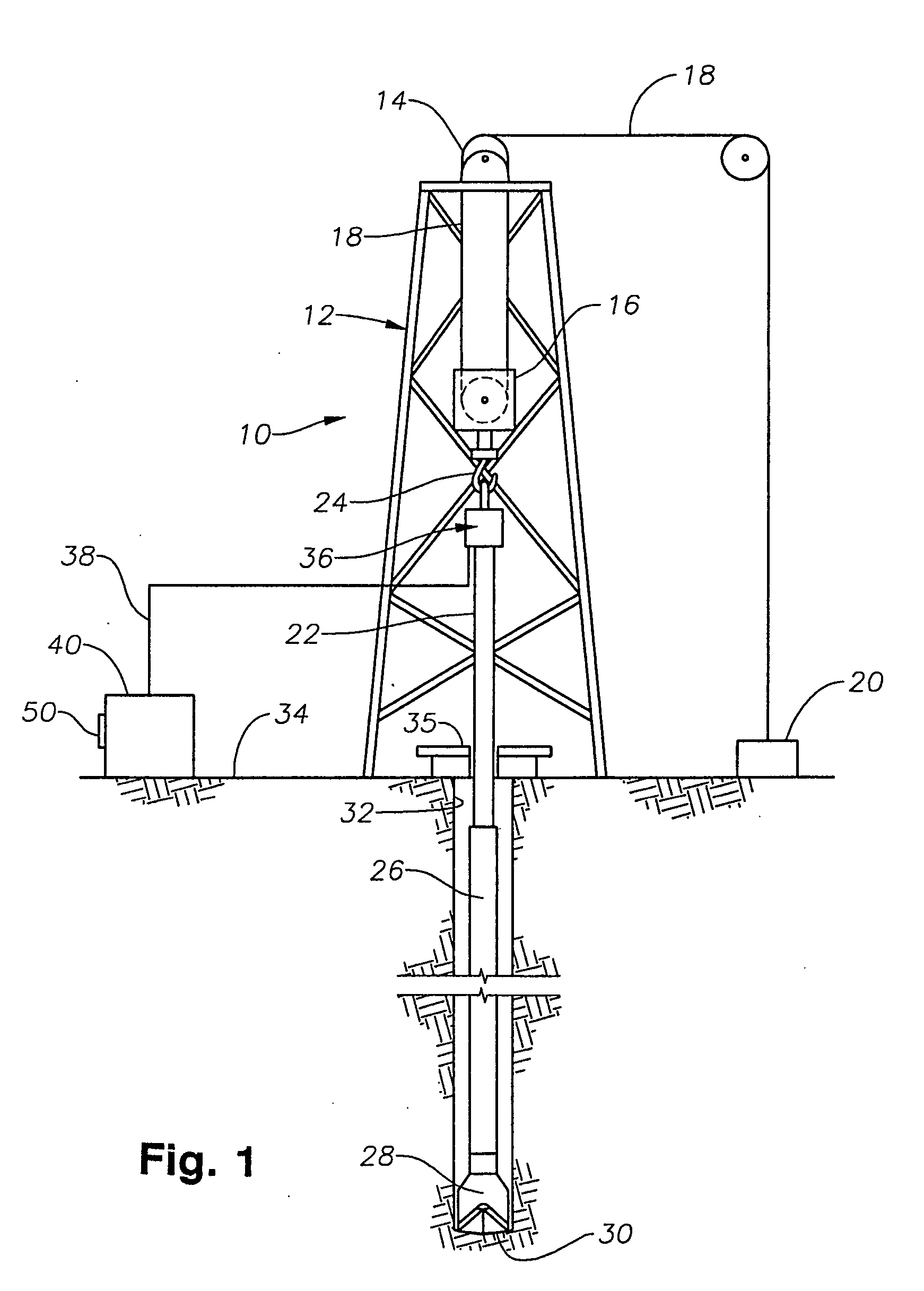Autoreaming systems and methods
a technology of auto-reaming and system, which is applied in the direction of shaft equipment, borehole/well accessories, survey, etc., can solve the problems of drill string becoming overtorqued, bit is prone to damage, and bit may be damaged
- Summary
- Abstract
- Description
- Claims
- Application Information
AI Technical Summary
Benefits of technology
Problems solved by technology
Method used
Image
Examples
Embodiment Construction
[0045]FIG. 1 illustrates, in schematic fashion, an exemplary drilling rig 10 with an automatic drilling system. The rig 10 includes a supporting derrick structure 12 with a crown block 14 at the top. A traveling block 16 is movably suspended from the crown block 14 by a cable 18, which is supplied by draw works 20. A kelly 22 is hung from the traveling block 16 by a hook 24. The lower end of the kelly 22 is secured to a drill string 26. The lower end of the drill string 26 has a bottom hole assembly 28 that carries a drill bit 30. The drill string 26 and drill bit 30 are disposed within a borehole 32 that is being drilled and extends downwardly from the surface 34. The kelly 22 is rotated within the borehole 32 by a rotary table 35. Other features relating to the construction and operation of a drilling rig, including the use of mud hoses, are well known in the art and will not be described in any detail herein.
[0046] A load cell assembly, generally shown at 36, is disposed below t...
PUM
 Login to View More
Login to View More Abstract
Description
Claims
Application Information
 Login to View More
Login to View More - R&D
- Intellectual Property
- Life Sciences
- Materials
- Tech Scout
- Unparalleled Data Quality
- Higher Quality Content
- 60% Fewer Hallucinations
Browse by: Latest US Patents, China's latest patents, Technical Efficacy Thesaurus, Application Domain, Technology Topic, Popular Technical Reports.
© 2025 PatSnap. All rights reserved.Legal|Privacy policy|Modern Slavery Act Transparency Statement|Sitemap|About US| Contact US: help@patsnap.com



